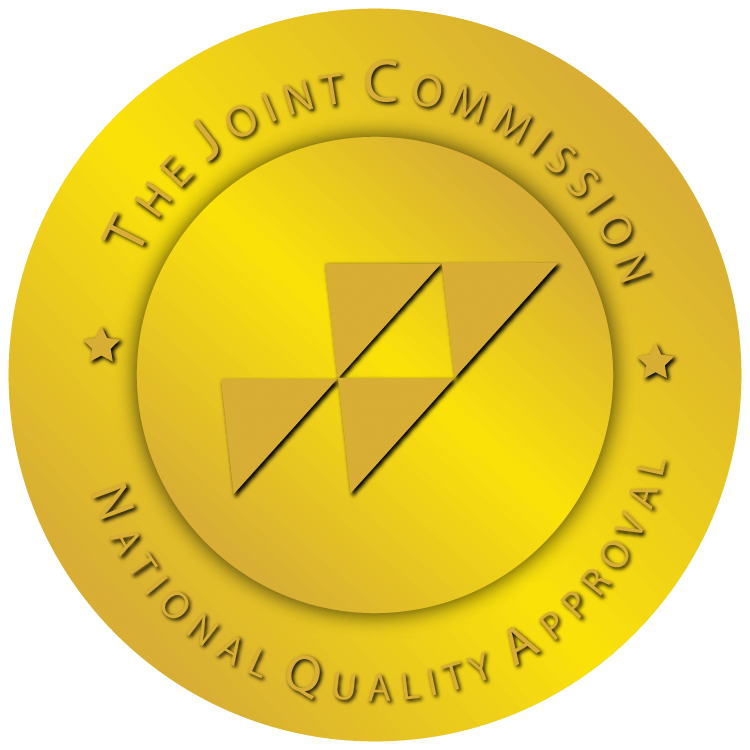
Although it can be frustrating to those just starting out on their journey, there’s no one true path to recovery from substance use disorder. Depending on who you are, you may require a completely different therapeutic technique than someone else in your same rehabilitation program—that’s to be expected. For instance, people with specific backgrounds or life experiences, such as a history of trauma, are going to require unique forms of treatment.
As you search for your individual path to recovery, it is worth considering all your options for treatment. Some therapies will be more effective for certain patients than others. Eye movement desensitization and reprocessing (EMDR) therapy, for example, could be a perfect solution for your recovery needs. Although it isn’t going to work for every person recovering from substance use disorder, EMDR can be a highly effective therapy for some patients. More specifically, this treatment seems to offer impressive outcomes when used by individuals with drug or alcohol dependency who are working to recover from traumas of their past.
Many individuals, currently in treatment for substance dependency, have experienced trauma at some point in their life. It’s essential that trauma is accounted for during the recovery process. Not only can these experiences influence the initial development of an addiction, but they can also drive someone back to that addiction time and time again. This is why it’s so important to incorporate trauma-focused therapies to treat the whole patient.
It’s also crucial to remember that trauma isn’t simply an isolated event that occurs in an individual’s past. Sadly, trauma rarely occurs in a vacuum. Oftentimes, the psychological trauma someone experiences will result in long-term feelings of distress and other intrusive symptoms—especially if the source of that trauma isn’t directly examined and targeted during treatment.
So, what does this therapy entail? Here’s a concise overview of EMDR and how it can benefit recovering addicts (specifically those dealing with trauma).
What Is EMDR?
 The inception of EMDR can be sourced back to 1987. At the time, the therapy was created as a means to treat post-traumatic stress disorder (PTSD)—and not necessarily just in individuals recovering from addiction.
The inception of EMDR can be sourced back to 1987. At the time, the therapy was created as a means to treat post-traumatic stress disorder (PTSD)—and not necessarily just in individuals recovering from addiction.
When EMDR was first created, the general approach to PTSD treatment was significantly different from what it is today. Rather than treatments targeting the traumatic memories and experiences themselves, therapies focused on treating the symptoms. Essentially, rather than going down to the roots of this disorder, PTSD treatments of the 1980s tended to focus on alleviating the effects stemming from those roots.
However, as we now know, it’s difficult to effectively treat trauma-centered disorders without first unpacking the source of the symptoms. Although the symptoms can be masked or even managed in the short term, older treatments were ineffective at creating a long-term sense of control over one’s disorder. EMDR, however, was one of the earliest treatments to begin shifting this focus. In order to treat the cause of the condition, EMDRwas created to target the traumatic memories themselves.
Another aspect of EMDR that makes it so unique is the use of bilateral stimulation. Essentially, bilateral stimulation describes the promotion of left-right and back-and-forth stimulation; this stimulation is created through the combined use of specific eye movement, physical taps, and audio tones. By incorporating this practice into a patient’s treatment plan, they will find it easier to first activate their traumatic memories before care providers can work to begin reducing the intensity of those memories.

As the patient focuses on the traumatic memory, their therapist will perform back and forth hand motions, which can then be followed by the patient’s eyes. For example, the practitioner may move their finger in a steady back and forth motion in front of their patient during this procedure. The patient will be asked to follow this movement with their eyes, alone, as they continue to focus on the target memory.
EMDR for Addiction Recovery
If trauma is left unhealed, it often leads to serious psychological symptoms, which can be difficult to manage without treatment. Seeing as these symptoms often culminate into emotional distress, this can have a significant impact on the patient’s ease of recovery during addiction treatment. After all, these feelings of distress are often what drive someone to turn to drugs and alcohol in the first place. If the distress isn’t targeted and treated directly, then the overall recovery process is going to be severely impaired.
Typically, EMDR will be most effective during addiction recovery when it’s used on patients with unresolved psychological trauma. Although patients whose addiction developed due to physical trauma (such as self-medicating after a serious injury) won’t benefit as profoundly, EMDR could still be a worthwhile treatment option.
What Are the Steps of EMDR Treatment?
When it comes to therapies used to treat drug and alcohol dependency, EMDR is an especially methodical option. The treatment is highly intentional and follows a pre-established series of steps. It is also an efficient form of treatment, usually only being used within a limited timeframe, rather than indefinitely—which is the case for many other kinds of treatments or therapies, such as cognitive-behavioral therapy (CBT).
Typically, EMDR treatment will take place over the course of six to twelve sessions in total. These sessions will be performed anywhere from once to twice per week, depending upon the individual’s set treatment plan. The eight steps (or phases) of EMDR are as follows and occur over the course of several weeks:
Stage 1: Establish the Patient’s History and Create a Treatment Plan
Like all forms of therapy, in order for EMDR to be at its most effective, the treatment must be highly individualized and tailored to the individual’s own experiences. During the first phase of EMDR, the patient’s therapist will work to get a clear sense of the patient’s history. This will typically occur during an initial assessment and allows the therapist to record information, such as the patient’s triggers, possible barriers to their recovery, and the traumatic memories that will need to be targeted. This is also the stage during which treatment goals will be established.
Stage 2: Patient Preparation

Next, the therapist will help the patient understand the treatment they’re about to experience and all that it could entail. The patient will gain a thorough understanding of bilateral stimulation and how it is performed. Their therapist will also provide them with coping skills to use between sessions to healthily process and work through the difficult memories that have been pulled to the surface.
Stage 3: Assessing the Traumatic Memory
Once a target memory has been identified, the therapist will begin to take a closer look. The patient will be asked to focus on the memory in question, describing it in several ways; for instance, what thoughts or images are associated with that memory? What effect does that memory have on the patient? What kinds of bodily sensations does recalling the memory lead to?
Stages 4 – 7: Treatment
During the next four stages of the EMDR process, the core treatment will take place. During this treatment, the primary goal will be to help the patient process and heal from unresolved trauma.
Additionally, treatment can be broken down into the following components:
- Desensitization: The therapist will lead the patient through bilateral stimulation while the patient focuses on the target memory. Throughout this process, the patient will be asked to provide insight into any new thoughts or lessening distress, which they now associate with the memory.
- Installation: The therapist will help their patient to develop a healthier understanding of the traumatic event and what it truly means to them.
- Body Scan: The patient will be encouraged to perform a “body scan”—during this process, they will take stock of the physical effects of their treatment, triggered by their recollection of the memory. If they are experiencing any kind of distress, their therapist will target this sensation using bilateral stimulation.
- Closure: At the end of every EMDR session is what’s known as “closure.” If the memory hasn’t been fully processed during the session, the therapist will provide the patient with healthy coping strategies to use between EMDR sessions.
Stage 8: Evaluation
This stage will be performed at the start of every EMDR therapy session. The therapist will get a clear sense of their patient’s current emotional state and how their treatment seems to be going. The therapist will also use this time to identify whether any new memories have been uncovered since the last session. Once this information has been gathered, the practitioner will be able to proceed with that day’s EMDR session.
Who Can Perform EMDR Therapy?
For a therapist to perform EMDR therapy on a patient, they will need to be specially trained and certified. Remember, EMDR is a rather meticulous and often quite complex process, and for patients to benefit, it will need to be performed correctly, step by step.
Not only must the therapist be licensed within their state to perform therapy, but they will also need to be licensed to perform EMDR, specifically.

Maryland Recovery Now Offers EMDR Services
Maryland Recovery provides personalized outpatient treatment services to those battling drug or alcohol addictions. We serve clients from across the country, many of whom travel to attend our unmatched Harford County treatment center. The goal of Maryland Recovery’s services is to treat the patients’ whole selves, getting to the root of the individual’s addiction—whether that root is based on trauma or otherwise.








